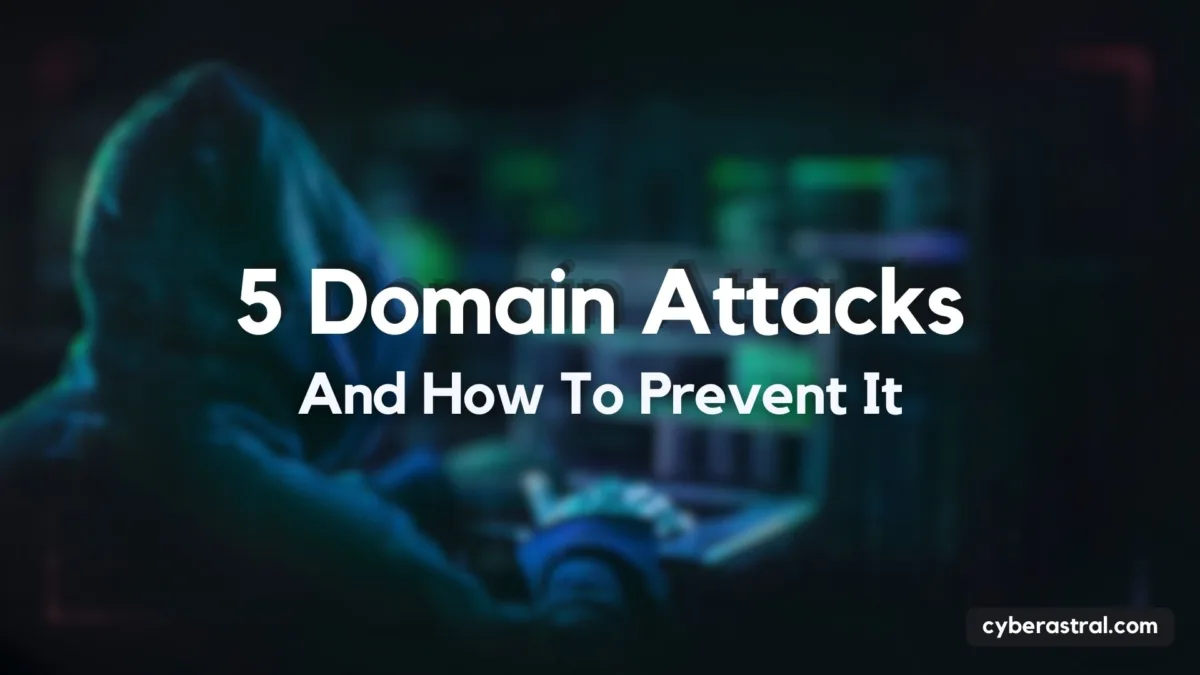1. Domain Phishing
Imagine a masterfully crafted fake website – identical to your bank’s – luring you to share your precious login details. That’s domain phishing in action. These imposters aim to steal your data, so stay vigilant!
Prevention:
- Double-check URLs: Before logging in, ensure the address matches the real website (e.g., https://www.yourbank.com, not https://www.youbank.com)).
- Beware of suspicious emails: Don’t click links or open attachments from unknown senders, even if they appear legitimate.
- Enable two-factor authentication (2FA): This adds an extra layer of security, requiring a code beyond your password.
Mitigation:
- If you suspect phishing, don’t enter any information and report the website to the authorities.
- Change your passwords immediately on the real website.
- Consider security software with anti-phishing features.
2. Typosquatting
Have you ever mistyped a website address? Attackers exploit such slip-ups with typosquatting. They register domains with common typos of popular sites (e.g., paypai.com instead of paypal.com) to redirect you to malicious sites.
Prevention:
- Slow down and be mindful: Take your time typing URLs and always double-check for typos.
- Bookmark trusted websites: Avoid relying on search engines, especially on public Wi-Fi.
- Use a browser extension: Some extensions warn you about potential typosquatting attempts.
Mitigation:
- If you land on a typosquatting site, close the browser window immediately.
- Scan your device for malware using a reputable antivirus program.
- Report the typosquatting domain to the appropriate authorities.
3. Registrar Hijacking
This sounds serious, and it is! Attackers gain unauthorized access to your domain registrar account, essentially stealing your domain name. Imagine losing your website’s address – yikes!
Prevention:
- Use strong and unique passwords for your domain registrar account.
- Enable two-factor authentication (2FA) for added security.
- Keep your contact information up-to-date with your registrar for security notifications.
Mitigation:
- Contact your domain registrar immediately if you suspect hijacking.
- Report the incident to the authorities and relevant cybersecurity organizations.
- Consider using a domain name security service for increased protection.
4. DNS Hijacking
Picture this: you type in a website address, but instead of reaching the intended destination, you’re rerouted to a malicious site. That’s the power of DNS hijacking. Attackers manipulate the Domain Name System (DNS) to control where your internet traffic goes.
Prevention:
- Use a secure DNS server: Opt for reputable DNS providers like Google DNS or OpenDNS.
- Keep your software and devices updated: Patch vulnerabilities that attackers could exploit.
- Be cautious when clicking on links: Especially in emails or on suspicious websites.
Mitigation:
- If you suspect DNS hijacking, clear your browser cache and DNS cache.
- Run a malware scan on your device.
- Contact your internet service provider (ISP) and report the incident.
5. DDoS Attacks
Imagine a tidal wave of internet traffic crashing your favorite website. That’s what DDoS attacks do – they overwhelm a website with traffic, making it inaccessible to legitimate users. Attackers often use botnets (networks of compromised devices) to launch these attacks.
Prevention:
- Choose a web hosting provider with DDoS protection: Many providers offer built-in DDoS mitigation features.
- Implement security measures on your website: Firewalls and intrusion detection systems (IDS) can help identify and block malicious traffic.
- Stay informed about DDoS threats: Regularly update your website’s security software and keep aware of emerging attack methods.
Mitigation:
- If your website is under a DDoS attack, contact your hosting provider immediately.
- They can implement mitigation strategies to block the attack and restore service.
- Report the attack to the authorities and relevant cybersecurity organizations.
Remember, prevention is always better than cure! By staying informed and implementing these simple measures, you can significantly reduce your risk of falling victim to domain attacks. Stay vigilant,





